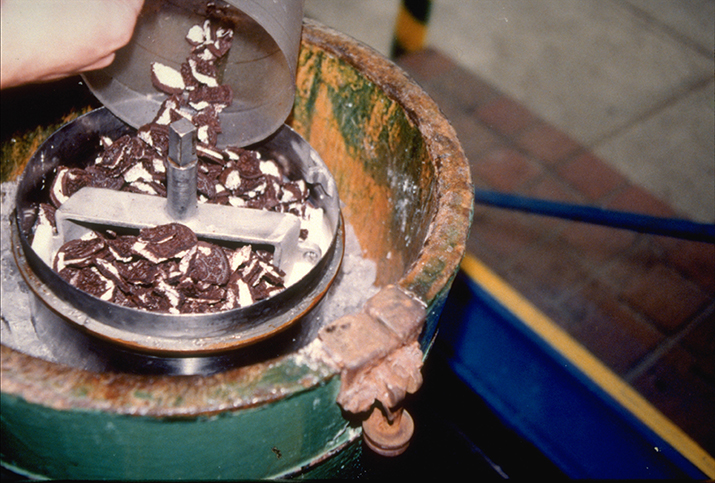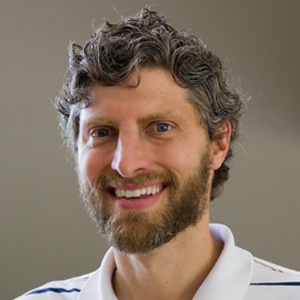The scoop on Jerry Greenfield
Stacks of Ben & Jerry's ice-cream pints fill grocery-store freezers around the world, the sky-blue containers embellished with fluffy white clouds and flavor name puns hinting at the brand’s quirky irreverence. So it might come as a surprise that a critical part of the brand’s global success is rooted in the staid world of science. “My biochemistry background allowed me to come up with the world-famous Ben & Jerry’s ice-cream formula,” asserts Jerry Greenfield.
 Jerry Greenfield, co-founder
Jerry Greenfield, co-founderof Ben & Jerry’sPhotos provided by Ben & Jerry’s
With his friend and business partner Ben Cohen, Greenfield parlayed the scientific knowledge he gained as a lab technician and medical school hopeful into the development of the internationally renowned ice cream. There now are more than 600 Ben & Jerry’s scoop shops in 35 countries, and annual sales of the ice cream reach $500 million.
Rejection
Greenfield and Cohen met in junior high school in the 1960s in upstate New York, where they were, according to Cohen, the “two slowest, fattest kids in gym class.” While Cohen didn’t have much interest in school (and eventually dropped out of college to become a potter), Greenfield had an aptitude for math and science. Because he “wasn’t driven to do something else,” Greenfield decided to become a doctor.
The first step in the process was to get a bachelor’s degree in biology from Oberlin College in Ohio. To bolster his medical-school applications, Greenfield then did stints as a technician in biochemistry labs at the Public Health Institute of the City of New York and the University of North Carolina.
But his lack of passion and drive for medicine was apparent. Greenfield freely admits he was “a middle-of-the-pack kind of person” and was rejected from medical schools twice. “I give the admissions people from all these medical schools a lot of credit for seeing that my future was going to be much better served somewhere else,” says Greenfield, his amusement apparent.
Meanwhile, Cohen was unsuccessful at trying to sell his pottery. “We probably had no choice but to start our own business,” he recalls. The friends contemplated opening a restaurant because, as Cohen wryly notes, “the only thing we were really interested in doing was eating.” But a friend informed them that breaking into the restaurant business was tough and suggested instead that they focus on making a single food item.
So Cohen and Greenfield turned their attention to bringing a big-city food trend to the rural college-town setting in which they both hoped to live. In the 1970s, the trendy choices were either bagels or home-made ice cream. The machinery for bagels was too expensive. That left ice cream.
Informal ice-cream education
In 1977, Greenfield and Cohen each plopped down $2.50 to pay for a correspondence course from Pennsylvania State University on how to make ice cream. They next splurged on the textbook “Ice Cream,” the so-called bible of ice-cream making written by Wendell S. Arbuckle, a professor of dairy science at the University of Maryland. Arbuckle and his wife, Ruth, were so famous for their knowledge of ice cream that they were known as “Mr. and Mrs. Ice Cream.”
Their studying complete, Greenfield and Cohen set out to establish the now-iconic Ben & Jerry’s ice cream. Greenfield applied his scientist scrutiny to the tiniest details of the process, focusing in particular on the workings of the single five-gallon ice-cream maker he and Cohen had at their disposal. “Jerry’s knowledge of science and math really came in handy,” Cohen acknowledges.
During the late 1970s, other ice-cream makers were pooh-poohing the old-fashioned freezing method, in which the outside of an ice cream maker barrel is packed with ice and rock salt while the internal dasher churns and whips the ingredients. Convinced that the ice-and-rock-salt mix was still workable, Greenfield pressed ahead with a method that commercial ice-cream makers thought would work only in people’s homes.
Additional tinkering with the freezing process, again informed by Greenfield’s knowledge of scientific processes, helped the duo with another aspect of the signature ice cream. “Part of what makes ice cream smooth and creamy is that there is air whipped into ice cream,” points out Greenfield. The balance of air, water and solid must be just right to make the ice cream rich and dense. “The larger the ice crystals are, the more icy and granular the ice cream tastes. That’s something you don’t want,” cautions Greenfield.
Just as important was the flavor. Cohen and Greenfield experimented extensively to come up with the perfect recipe, incorporating various mixtures of milk fat, egg yolks, sugar and water along with chunks of cookies and candy (Cohen’s preferred childhood additive).
 In the early days of Ben & Jerry’s, the duo made their ice cream in old-fashioned machines like this one. Photos provided by Ben & Jerry’s
In the early days of Ben & Jerry’s, the duo made their ice cream in old-fashioned machines like this one. Photos provided by Ben & Jerry’s
The Americone Dream
The perseverance and hard work paid off in 1978 when Ben & Jerry’s opened its first ice-cream parlor in a repurposed gas station in Burlington, Vt. “We were doing everything in this very small machine and doing everything by hand,” Greenfield recalls. As the scoops became more popular and demand began to rise, Greenfield says that the company had to pay attention to ensure that they got the same quality of ice cream from the higher-volume manufacturing processes.
The first franchised Ben & Jerry’s scoop shop opened in 1981 in Shelburne, Vt., and the company continued to expand. Ten years after they opened their first parlor, Greenfield and Cohen were named the “U.S. Small-Business Persons of the Year” by President Ronald Reagan in a White House Rose Garden ceremony. Ben & Jerry’s now offers more than 70 unique flavors, including Cherry Garcia, Karamel Sutra and, Greenfield’s own favorite, Americone Dream.
Greenfield and Cohen sold their company to the consumer goods conglomerate Unilever in 2000, but Greenfield says Ben & Jerry’s retains its reputation of being “a little off-beat, unconventional, irreverent and antiauthoritarian.” He acknowledges that such impudence would not have flown in his original chosen field of medicine. “I think Ben & Jerry’s has gotten a lot of freedom to create the kind of business we want to create and do it with our own rules that people in science, and certainly doctors, don’t have.”
Nonetheless, Greenfield proudly states, his training “was put to incredibly good use.” Millions of satisfied customers agree.
Enjoy reading ASBMB Today?
Become a member to receive the print edition four times a year and the digital edition monthly.
Learn moreGet the latest from ASBMB Today
Enter your email address, and we’ll send you a weekly email with recent articles, interviews and more.
Latest in People
People highlights or most popular articles

Mydy named Purdue assistant professor
Her lab will focus on protein structure and function, enzyme mechanisms and plant natural product biosynthesis, working to characterize and engineer plant natural products for therapeutic and agricultural applications.

In memoriam: Michael J. Chamberlin
He discovered RNA polymerase and was an ASBMB member for nearly 60 years.

Building the blueprint to block HIV
Wesley Sundquist will present his work on the HIV capsid and revolutionary drug, Lenacapavir, at the ASBMB Annual Meeting, March 7–10, in Maryland.

In memoriam: Alan G. Goodridge
He made pioneering discoveries on lipid metabolism and was an ASBMB member since 1971.

Alrubaye wins research and teaching awards
He was honored at the NACTA 2025 conference for the Educator Award and at the U of A State and National Awards reception for the Faculty Gold Medal.

Designing life’s building blocks with AI
Tanja Kortemme, a professor at the University of California, San Francisco, will discuss her research using computational biology to engineer proteins at the 2026 ASBMB Annual Meeting.


